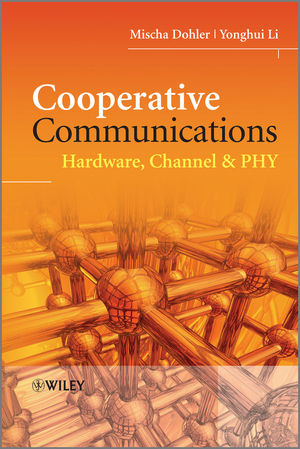Cooperative Communications: Hardware, Channel and PHYISBN: 978-0-470-99768-0
Hardcover
464 pages
March 2010
 |
||||||
Abbreviations.
Functions.
Symbols.
1 Introduction.
1.1 Book Structure.
1.2 Quick Introduction.
1.3 Application Scenarios.
1.4 Pros and Cons of Cooperation.
1.5 Cooperative Performance Bounds.
1.6 Definitions and Terminology.
1.7 Background and Milestones.
1.8 Concluding Remarks.
2 Wireless Relay Channel.
2.1 Introductory Note.
2.2 General Characteristics and Trends.
2.3 Regenerative Relaying Channel.
2.4 Transparent Relaying Channel.
2.5 Distributed MIMO Channel.
2.6 Concluding Remarks.
3 Transparent Relaying Techniques.
3.1 Introductory Note.
3.2 Transparent Relaying Protocols.
3.3 Transparent Space–Time Processing.
3.4 Distributed System Optimization.
3.5 Concluding Remarks.
4 Regenerative Relaying Techniques.
4.1 Introductory Note.
4.2 Regenerative Relay Protocols.
4.3 Distributed Space–Time Coding.
4.4 Distributed Network Coding.
4.5 Concluding Remarks.
5 Hardware Issues.
5.1 Introductory Note.
5.2 Analog Hardware Transceivers.
5.3 Digital Hardware Transceivers.
5.4 Architectural Comparisons.
5.5 Complexity of 3G UMTS Voice/HSDPA Relay.
5.6 Complexity of LTE/WiMAX Relay.
5.7 Hardware Demonstrators.
5.8 Concluding Remarks.
6 Conclusions and Outlook.
6.1 Contributions.
6.2 Real-World Impairments.
6.3 Open Research Problems.
6.4 Business Challenges.
References.
Index.



